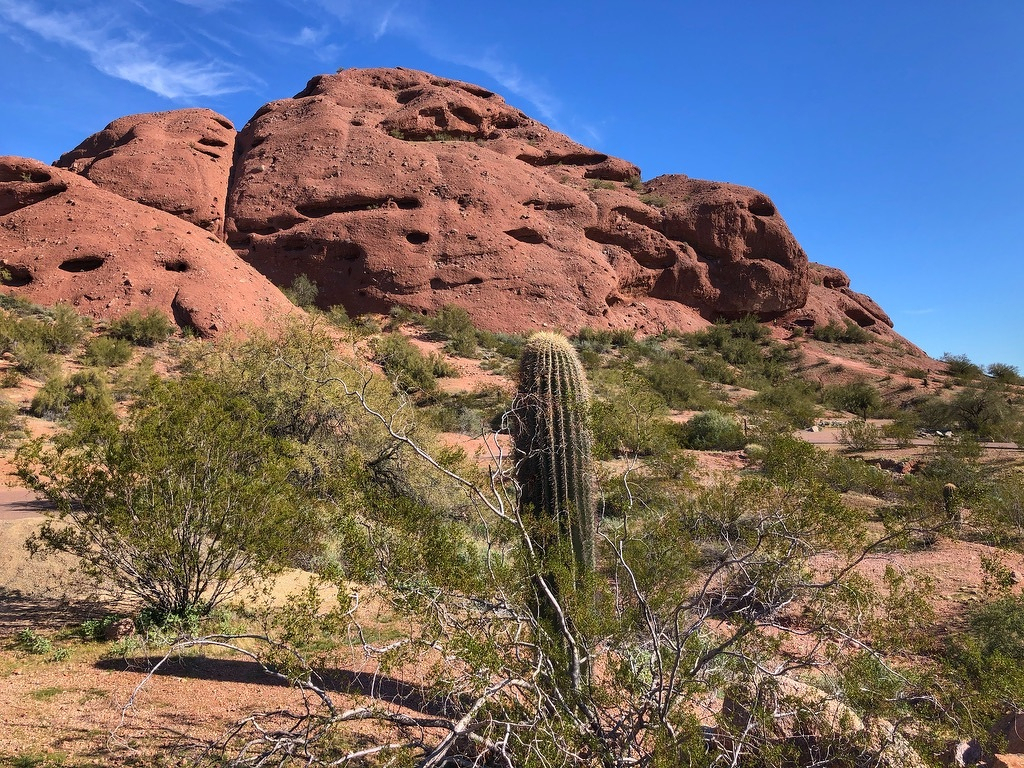What happens when you turn a national monument into a billboard?
JP posted about a video explainer on billboard advertising, which immediately conjured up the image of a billboard in the now-defunct Papago Saguaro National Monument. Here was my comment on his blog post:
Interesting video. You’re familiar with Saguaro National Park, which of course was originally designated as a national monument. Well, that happened in part as a response to the abolition of Papago Saguaro National Monument (now Papago Park, among other things) in Phoenix a few years prior. It was the first occasion that a national monument was decommissioned, which happened primarily due to inadequate funding that led to vandalism and substantial resource damage. Nearly all of the national monument’s iconic saguaros, for instance, were stolen for use in local landscaping. One of the other noteworthy impacts were the regular painting of advertisements—billboards, essentially—directly onto the buttes protected within the monument boundaries. Anyway, you’d think that The Thing billboards would be the first thing to pop into my head as an Arizonan who loves road trips, but nope, it was the billboards ruining Papago Saguaro National Monument.
I’m glossing over much of the story1, of course, but the big lesson is that designations alone don’t equate to actual long term resource protection. You need an adequate budget, resource protection rules that are routinely enforced, and a broad culture of respect towards (and pride of) the place to ensure that it’s not simply “protected in name only.” As an early national park unit designated prior to the establishment of the National Park Service, serviced by a single part-time absentee caretaker, and surrounded by a fast growing metropolitan area in an only recently established state, Papago Saguaro didn’t have enough of those things to last the test of time2. Luckily, much of the original acreage was eventually transferred to local governments and turned into Papago Park, the Desert Botanical Garden, and the Phoenix Zoo—which are all, quite literally, Phoenix Points of Pride today3.

Contrary to its reputation for urban sprawl, the City of Phoenix was an early pioneer in protecting open spaces for recreation. In 1924, while Papago Saguaro was struggling under federal mismanagement (perhaps “lack of management” might be a more accurate description), the fledging city bought 13,000 acres of South Mountain—an area five times as large as the city itself—to establish the world’s largest city park, preserving the land as a “pleasuring ground” for its residents. It was a bold move, and a smart response to the problems encountered at Papago Saguaro.
And it helped set the course for Phoenix’s impressive desert preserves. Today, metro Phoenix boasts four of the five largest city parks in the country, as well as the nation’s largest county park system, too.
-
A more complete telling of the story can be found in an out-of-print book called Papago Park: A History of Hole-In-The-Rock from 1848 to 1995 (by Jason Gart, Pueblo Grande Museum). I have a photocopy of the book somewhere; it’s a fascinating history. I haven’t found any better sources on the national monument period. ↩︎
-
I’ve visited nearly every one of the “decommissioned” national parks as part of my Former National Park Units quest. Each of them has an interesting story behind their designation and/or dissolution. National Parks Traveler has a good series on many of these stories called Pruning the Parks. ↩︎
-
Frank Lloyd Wright even proposed that the state capitol be moved to the former national monument site, designing an unsolicited “oasis” of democracy in the desert. It was rejected, with one legislator complaining that it looked like an “oriental whorehouse.” ↩︎